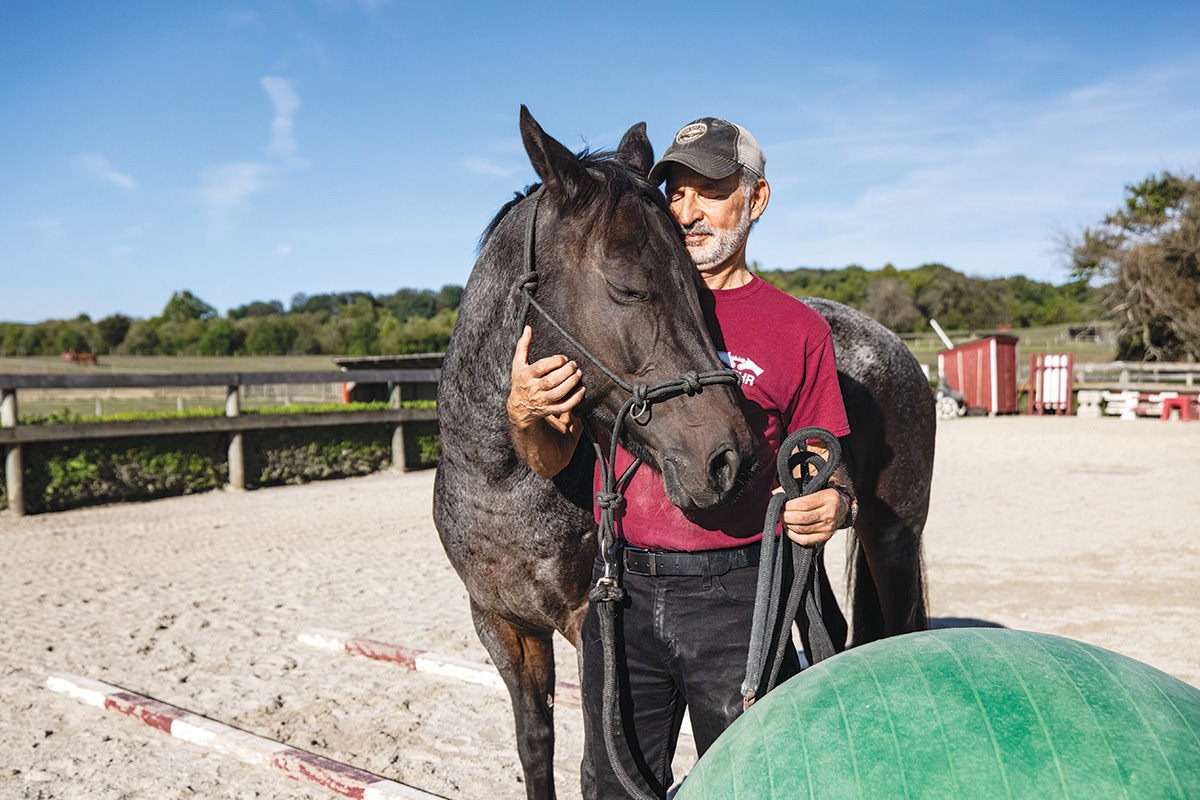Read the full article about volunteering at horse rescues in Horse Illustrated’s July 2024 issue! Below is some great content we couldn’t fit in the print article, featuring insight on getting started with volunteering.

Getting Started with Volunteering at Horse Rescues
1. Research Nearby Organizations
A good first step for those interested in volunteering is to identify what facilities are within a convenient distance and visit their website for volunteer information, says Shyre Lancia, senior volunteer coordinator for the Massachusetts Society for Prevention of Cruelty to Animals (MSPCA) at Nevins Farm.
“The priority is to meet the need of that rescue, but of course it should be in a way that is achievable for the person,” she says.
2. Pay Attention to the Volunteer Requirements
Most facilities have information on their websites that will make it clear what they need help with, including any requirements applicants should meet, and Lancia encourages people to pay attention to the required skills and experience, if any are listed.
“Trust that the organization is looking for specific skills or experience for good reason,” says Lancia. “For barns especially, some of the tasks are very physically demanding, and you’ll be outdoors no matter the weather. This is obvious to equestrians, but I get a fair number of applications from new-to-barn people who don’t realize they’ll be outside in the snow!”
3. Get to Know the Organization
Most will have some sort of orientation, which is a great way to get to know their organization a bit more and decide if you want to commit, says Brittney Vallot, director of operations at Days End Farm Horse Rescue (DEFHR).
Lancia also advises making sure the role is a good fit and being honest with yourself about that.
“There’s so many ways people can volunteer, and different facilities may have different roles available—don’t be discouraged if the first one you look at isn’t a good match,” she says. “Keeping an eye on the websites over time may result in something opening up that wasn’t there when you originally looked, too.”
4. Get Involved
Once you get started at a place, Vallot encourages getting involved.
“The more you do, the more you seek out ways to participate, the more you will learn and grow as a horse person.”
Lancia advises thinking outside the box and being open to helping organizations in different ways.
“We get a lot of applications for dog and barn volunteers, but very needed and helpful positions such as those handling phones and email are often bypassed,” she says.
Don’t assume you have nothing to offer, adds Vallot. Many times, obstacles can be overcome.
“Have limited time or lack of transportation? Ask the organization if there’s a way you could help them remotely. Have a physical limitation that keeps you from working in the barn? Maybe you can help them in the office or man a booth at an event. There’s always a way you can get involved and help.”
Going Above and Beyond
While volunteers are an essential part of daily operations, their dedication knows no bounds when extraordinary circumstances arise.
“It truly takes a village, and our village is amazing!” says Vallot. She shares just a few of the ways volunteers have gone above and beyond to help the facility in times of need:
◆ We once lost water in the middle of a 3-foot blizzard and our volunteers braved horrible road conditions to help us transport water from the neighboring firehouse to each and every stall, paddock and field on the farm to ensure the horses had water.
◆ Another time we had a full barn with 18 horses in critical care rehabilitation needing round-the-clock care and supervision. We had volunteers coming out each and every day and night to make sure they got the attention they needed.
◆ When our farm was hit by a microburst storm that destroyed run-in sheds, and took down trees and fences, our volunteers, and the community, showed up in droves to help with the cleanup.
◆ Last, but not least, is during COVID. We had to shut down our farm to all but the most experienced volunteers to be the most efficient with the least amount of people (for social distancing), but those few volunteers were committed and showed up! We were working with a skeleton crew staff each day and we wouldn’t have gotten everything done each day if it weren’t for the volunteers who stuck it out with us.





